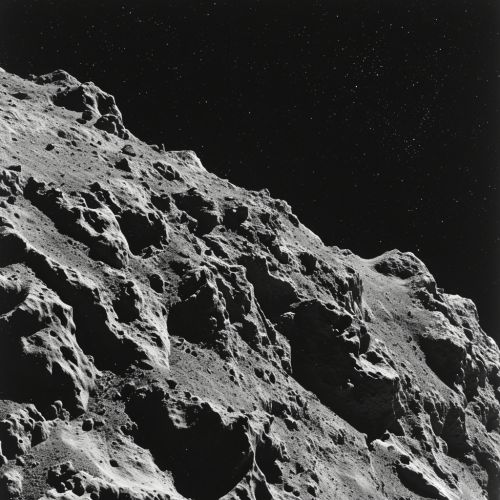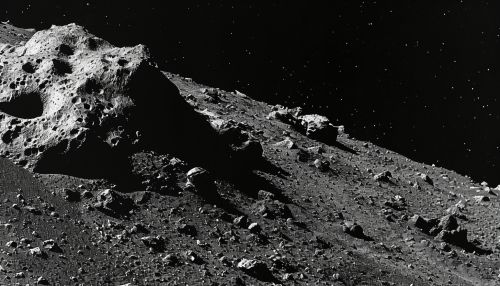Asteroid
Introduction
An asteroid is a small, rocky object that orbits the sun. They are similar to planets but much smaller in size. They are considered remnants from the early solar system and thus hold clues to the formation and evolution of the solar system.
Formation
Asteroids are believed to have formed from the solar nebula, a cloud of gas and dust left over after the formation of the Sun. The process of asteroid formation involves the accumulation of these materials through a process known as accretion. However, unlike planets, asteroids could not accumulate enough material to grow larger due to the gravitational influence of nearby Jupiter.


Classification
Asteroids are classified into three main types based on their composition: C-type (carbonaceous), S-type (silicate), and M-type (metallic). C-type asteroids are the most common and are believed to be representative of the sun's original material. S-type asteroids are made up of silicate materials and nickel-iron, while M-type asteroids are primarily composed of metallic iron.
Location
Most asteroids are found in the asteroid belt, a region of space located between the orbits of Mars and Jupiter. However, some asteroids, known as near-Earth objects, have orbits that bring them close to Earth. There are also Trojan asteroids that share an orbit with a larger planet.
Exploration
Asteroid exploration involves sending spacecraft to study asteroids up close. Several missions, such as NASA's Dawn and Japan's Hayabusa2, have visited asteroids and returned valuable data. These missions provide insights into the composition, structure, and history of asteroids, which can help scientists understand the early solar system.
Impact on Earth
Asteroids have had a significant impact on Earth's history. The most famous example is the asteroid that struck Earth about 65 million years ago, leading to the extinction of the dinosaurs. Today, scientists closely monitor near-Earth objects to mitigate the potential threat of an asteroid impact.
Future Prospects
Asteroids could play a crucial role in the future of space exploration. They could serve as stepping stones for human exploration of the solar system. Additionally, asteroids could be mined for resources, a concept known as asteroid mining.
